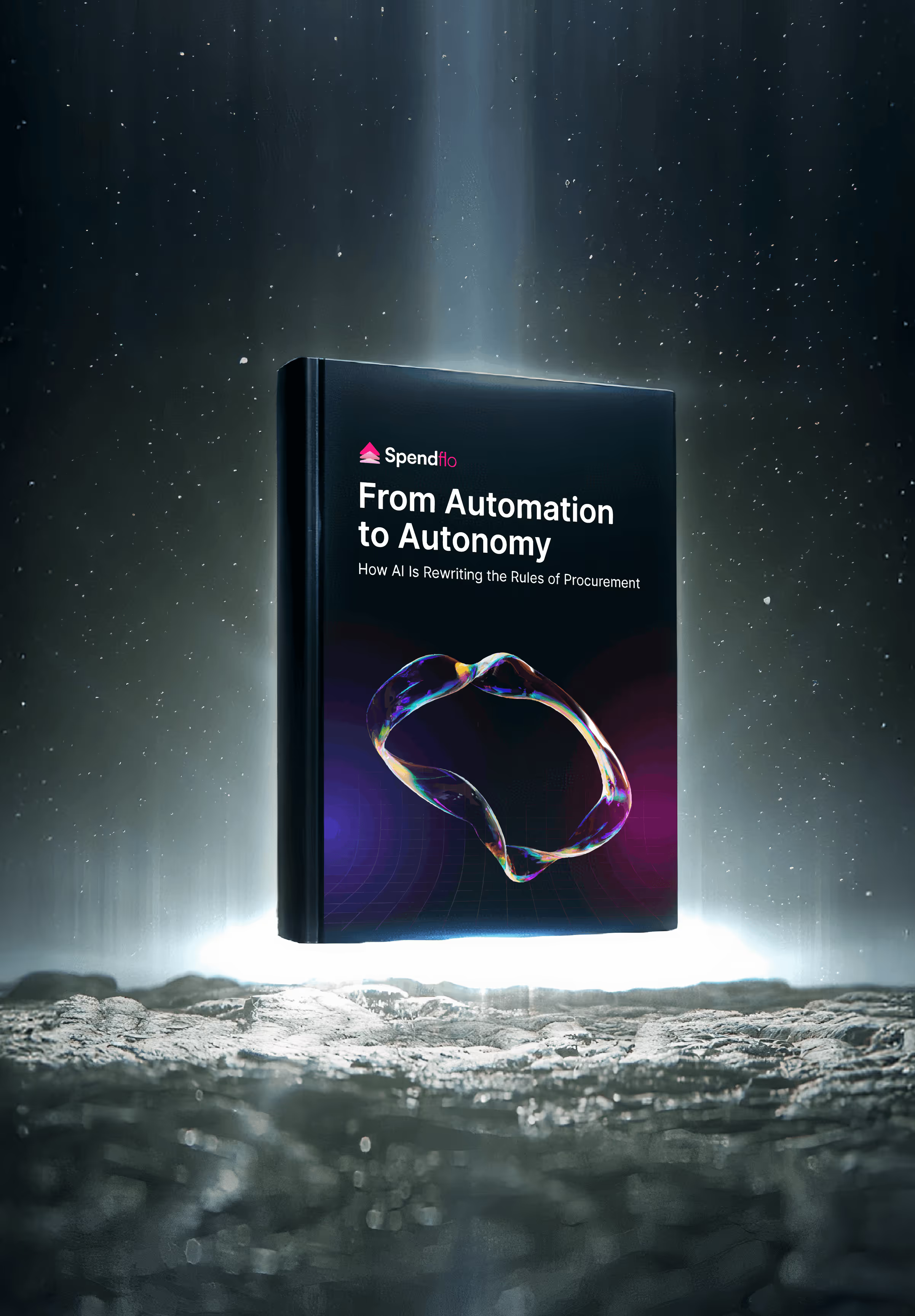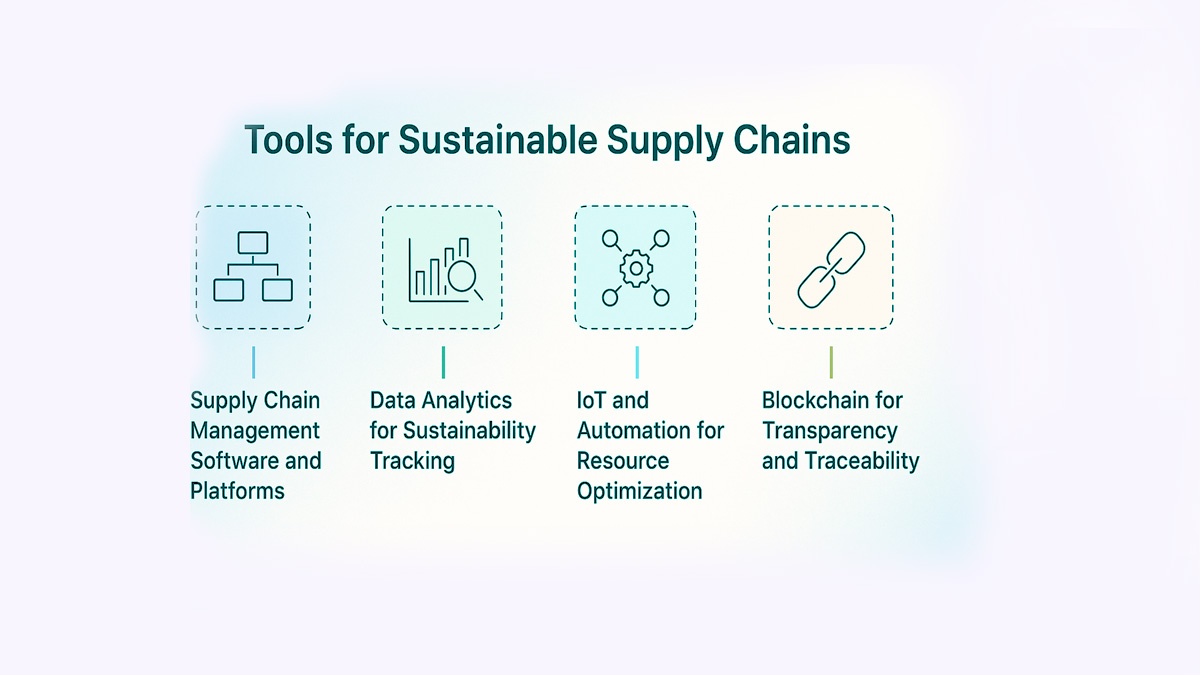

Sustainable Supply Chain Management: How to Get It Right

Sustainable Supply Chain Management: How to Get It Right
Discover how sustainable supply chain management boosts resilience, cuts environmental impact, and drives long-term profitability through strategies and tools.


Sustainable supply chain management (SSCM) isn’t just a trendy buzzword anymore - it’s become a must-have for businesses that want to balance profit with purpose. Customers expect it. Regulators demand it. Investors are watching closely. That means your supply chain can’t just be fast and cost-efficient; it has to be a responsible supply chain that’s ethical, resilient, and ready for the future. In this guide, we’ll break down what SSCM really is, why it matters more than ever, and the core elements that make it work in practice.
What this blog covers:
- What is sustainable supply chain management
- Why is sustainable supply chain management important
- Key components of sustainable supply chain management
- Sustainable supply chain management strategies
- Technology and tools for sustainable supply chain management
- How Spendflo helps with sustainable supply chain management
- Frequently asked questions on sustainable supply chain management
What Is Sustainable Supply Chain Management?
Sustainable supply chain management (SSCM) integrates environmental and social responsibility into sourcing, production, storage, and delivery while safeguarding profitability. It reduces waste and emissions, protects workers and communities, and builds resilient operations that meet stakeholder expectations and support long‑term success.
Why Is Sustainable Supply Chain Management Important
Sustainable supply chain management balances profit with responsibility. It reduces environmental damage, supports ethical labor, and builds resilience against disruptions. By aligning business goals with sustainability, companies gain efficiency, protect their reputation, and secure long-term growth in a shifting global market.

Here are the main reasons it matters:
Reduces Environmental Impact
Every product leaves a footprint, from raw material extraction to delivery. SSCM focuses on shrinking that footprint - cutting carbon emissions, reducing waste, and conserving biodiversity. Businesses that prioritize eco-friendly sourcing and cleaner production methods not only meet regulatory requirements but also earn trust from environmentally conscious customers.
Promotes Social Responsibility
A sustainable supply chain also looks after the people behind it. That means fair wages, safe workplaces, and ethical treatment of workers across the globe. Companies that uphold these standards strengthen supplier relationships, boost employee morale, and demonstrate a genuine commitment to human rights.
Enhances Long-Term Supply Chain Success
Short-term cost savings mean little if the supply chain collapses under stress. SSCM builds resilience - whether it’s adapting to climate change, navigating raw material shortages, or responding to supply chain disruptions and shifting regulations. Sustainable practices give companies the flexibility to survive and thrive in uncertain conditions.
Improves Economic Profitability
While sustainability can involve upfront costs, the long-term payoff is clear. Efficient use of energy and materials lowers operating expenses, and waste reduction trims unnecessary spending. On top of that, strong sustainability credentials can attract investors, open new markets, and give brands a competitive edge.
Key Components of Sustainable Supply Chain Management
A truly sustainable supply chain doesn’t happen by accident - it’s built on deliberate choices at every stage, from sourcing the first raw material to delivering the finished product. These components form the backbone of SSCM, ensuring that environmental, social, and economic goals are met without sacrificing procurement performance.
Ethical Sourcing of Raw Materials
Sourcing responsibly means knowing where materials come from and under what conditions they were produced. This involves avoiding conflict minerals, working with certified suppliers, and prioritizing renewable or recycled resources. Transparent sourcing, including the use of recycled materials, not only protects the planet but also builds credibility with customers and stakeholders.
Energy-Efficient Production and Storage
The production process and storage can be major drains on energy - and budgets. Companies embracing energy-efficient equipment, renewable energy sources, and smart warehouse systems reduce their environmental impact while saving money. Small changes, like better insulation or LED lighting, can deliver big results over time.
Eco-Friendly Delivery and Transportation
Getting goods from point A to point B often creates a sizable carbon footprint. SSCM promotes fuel-efficient fleets, optimized delivery routes, and alternative transport methods such as electric vehicles or rail. These steps cut emissions, reduce fuel costs, and keep companies on track to meet climate targets for the benefit of future generations.
Circular Economy Practices
Rather than following a “take-make-dispose” model, circular economy principles aim to keep materials in use for as long as possible. This might mean designing products for easy repair, reusing components, or recycling end-of-life items into new goods. It’s a shift that reduces waste, conserves resources, and can even open up new revenue streams.
Sustainable Supply Chain Management Strategies
Building a sustainable supply chain isn’t about one big leap - it’s about consistent, strategic actions that add up over time. The right supply chain strategy turns sustainability from a goal into a day-to-day reality for your business and its partners.
Set Clear Sustainability Goals and KPIs
Vague commitments rarely drive change. Defining measurable goals - like cutting emissions by a certain percentage or ensuring all suppliers meet ethical labor standards - creates a clear path forward. KPIs help track progress, celebrate wins, and hold teams accountable for results, encouraging a culture of continuous improvement.
Engage Stakeholders and Suppliers in Sustainability Efforts
Sustainability can’t be a solo effort. Suppliers, partners, and even customers need to be part of the conversation. From supplier audits to joint improvement projects, collaboration ensures everyone’s working toward the same vision and standards, building stronger, more transparent relationships along the way.
Adopt Reduce, Reuse, Recycle Principles
The “three Rs” aren’t just for households. In supply chains, they might mean redesigning products to use fewer resources, finding new uses for production scraps, or offering recycling programs for end-of-life products. These steps reduce costs, improve waste management, and reliance on raw materials.
Invest in Employee Training and Awareness Programs
Employees are the hands and minds behind every sustainability initiative. Training programs ensure they understand how their daily actions impact goals, while awareness campaigns keep sustainability front of mind. Empowered teams are more likely to spot opportunities for improvement and innovate solutions.
Technology and Tools for Sustainable Supply Chain Management
Technology has become the quiet powerhouse behind modern sustainability efforts. The right tools give companies the visibility, efficiency, and precision they need to meet ambitious environmental and social goals - without losing sight of profitability.

Supply Chain Management Software and Platforms
Centralized platforms bring supplier data, order tracking, and supply chain optimization under one roof. Many now include sustainability features, such as emissions calculators or compliance dashboards, helping businesses monitor and manage their impact in real time.
Data Analytics for Sustainability Tracking
Data is only valuable if it drives action. Analytics tools provide the data and insights to reveal where resources are being wasted, which suppliers fall short on sustainability, and how changes ripple through the supply chain. Predictive insights can also flag risks before they become costly problems.
IoT and Automation for Resource Optimization
Sensors and automation systems track everything from warehouse temperatures to machine energy use. This real-time visibility helps businesses reduce waste, cut downtime, and make fine-tuned adjustments that advance environmental sustainability while saving both resources and money.
Blockchain for Transparency and Traceability
Blockchain offers a tamper-proof record of every transaction, from raw material sourcing to final delivery. This level of traceability reassures customers and stakeholders that sustainability claims are backed by hard evidence, not just marketing promises.
How Spendflo Helps with Sustainable Supply Chain Management
At Spendflo, we help businesses turn sustainability goals into measurable results by streamlining procurement and supplier management. Our platform centralizes vendor data, making it easier to track performance against environmental and ethical benchmarks. We enable smarter sourcing decisions, negotiate better contracts, and uncover opportunities to cut waste without compromising quality or environmental responsibility.
By aligning spend management with sustainability objectives, we help companies lower costs, strengthen supplier relationships, and make a positive impact - all while keeping operations efficient and future-ready.
Frequently Asked Questions on Sustainable Supply Chain Management
What are the benefits of sustainable supply chain management?
It helps businesses lower their environmental footprint, improve efficiency, and strengthen their brand. SSCM can reduce costs, attract eco-conscious customers, ensure regulatory compliance, and build resilience against disruptions - all while contributing to long-term profitability and social good.
How can technology improve supply chain sustainability?
Tech tools like IoT sensors, blockchain, and advanced analytics provide real-time visibility into sourcing, production, and delivery. They help track emissions, production, and delivery. They help track emissions, optimize routes, reduce waste, and verify ethical practices, making it easier to hit sustainability targets.
What challenges do companies face in adopting sustainable practices?
Barriers include high initial costs, limited supplier cooperation, difficulty sourcing sustainable materials, and gaps in technical expertise. Resistance to change and complex global supply networks can also slow progress, especially for larger organizations.
How does sustainable supply chain management impact costs?
While upfront investments may be significant, SSCM often leads to long-term savings through energy efficiency, reduced waste, and optimized logistics. It can also open access to premium markets and attract investors looking for responsible business practices.
Can small businesses implement sustainable supply chain practices?
Absolutely. Starting small - like sourcing locally, reducing packaging, or partnering with eco-friendly suppliers - can make a difference. Over time, small businesses can expand these efforts, benefiting from cost savings, stronger brand loyalty, and better market positioning.
What challenges do organizations face in building a sustainable supply chain?
Building a sustainable supply chain often means navigating a mix of sustainability risks, from inefficient resource use to poor waste disposal practices. For many service organizations and public services, operational challenges like budget limits or legacy processes can slow progress. Yet, by treating sustainability as a foundational concept - not an afterthought - companies can address these barriers head-on, creating systems that are both resilient and responsible.










.png)




.png)










.avif)





